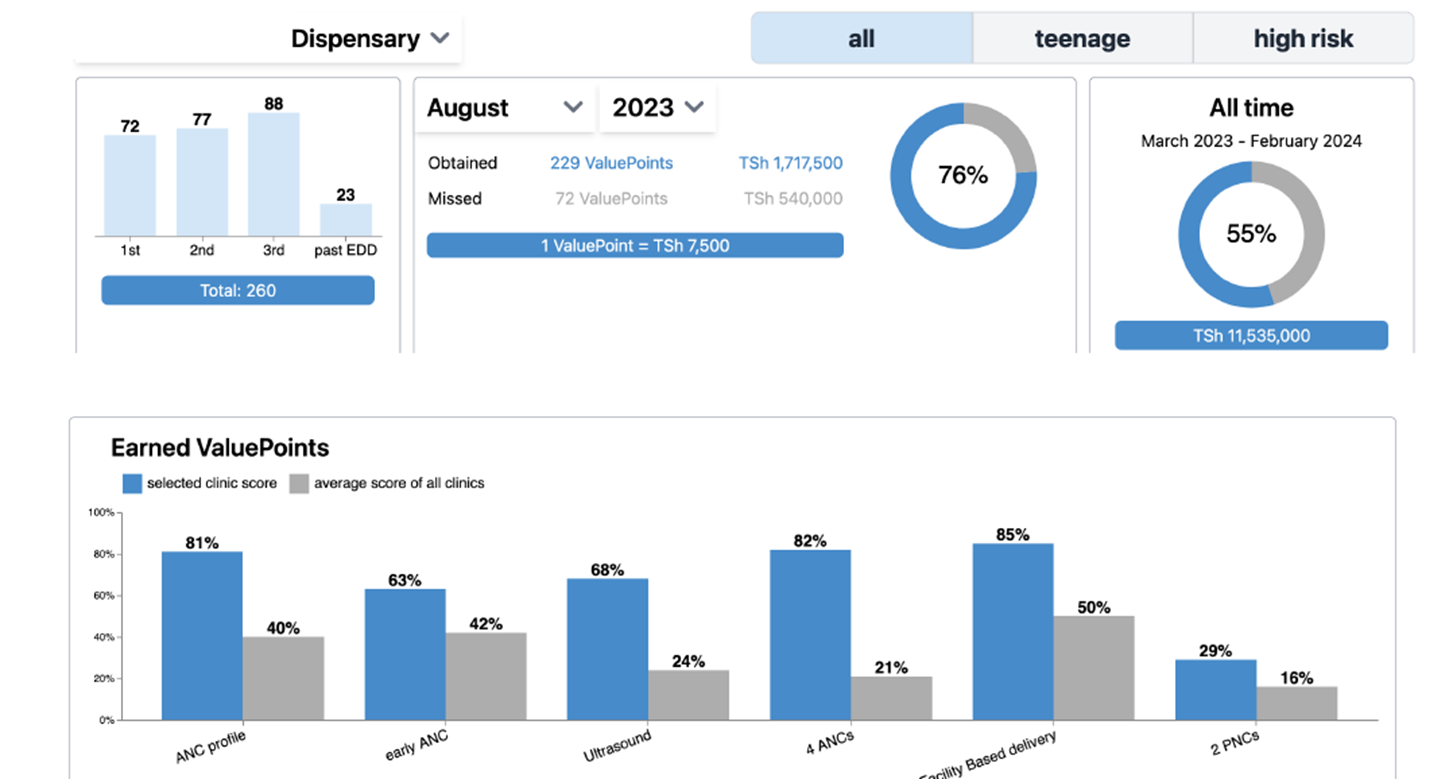Technical Interoperability
To effectively track key maternity care services across provider networks, the ValuePoints (VP) system was built on a digital reporting infrastructure, leveraging the openHIE architecture. This technical foundation ensured interoperability, aiming to minimize the reporting burden on healthcare providers.
This openHIE-based system utilizes existing digital health applications and standardizes data using FHIR (Fast Healthcare Interoperability Resources) standards. This approach enables seamless data exchange between providers, supporting real-time reporting to national and local health systems such as the tailored VP dashboards and DHIS2 reports.
By adopting open standards and open-source technologies, the ValuePoints system was designed to be:
- Interoperable – ensuring smooth data exchange across various digital health platforms
- Transferable – adaptable to different healthcare ecosystems
- Scalable – requiring minimal investment beyond standardization for broader implementation
ValuePoint Dashboards

VP dashboards played a critical role in visualizing maternal care data, offering key insights into service delivery across provider networks. These dashboards enabled:
- Tracking of obtained, missed, and attainable ValuePoints per provider
- Comparative performance analysis against network averages
- Real-time insights to support providers in improving care delivery
By presenting actionable data at both provider and district levels, the system empowered healthcare teams and policymakers to monitor trends, identify gaps, and implement targeted interventions.
Take-aways
The ValuePoints digital system highlights the power of open standards and digital health innovation in transforming maternity care. By leveraging interoperable, scalable, and cost-effective technologies, policymakers can ensure efficient tracking, evaluation, and improvement of maternal healthcare services, ultimately contributing to better health outcomes for mothers and newborns.